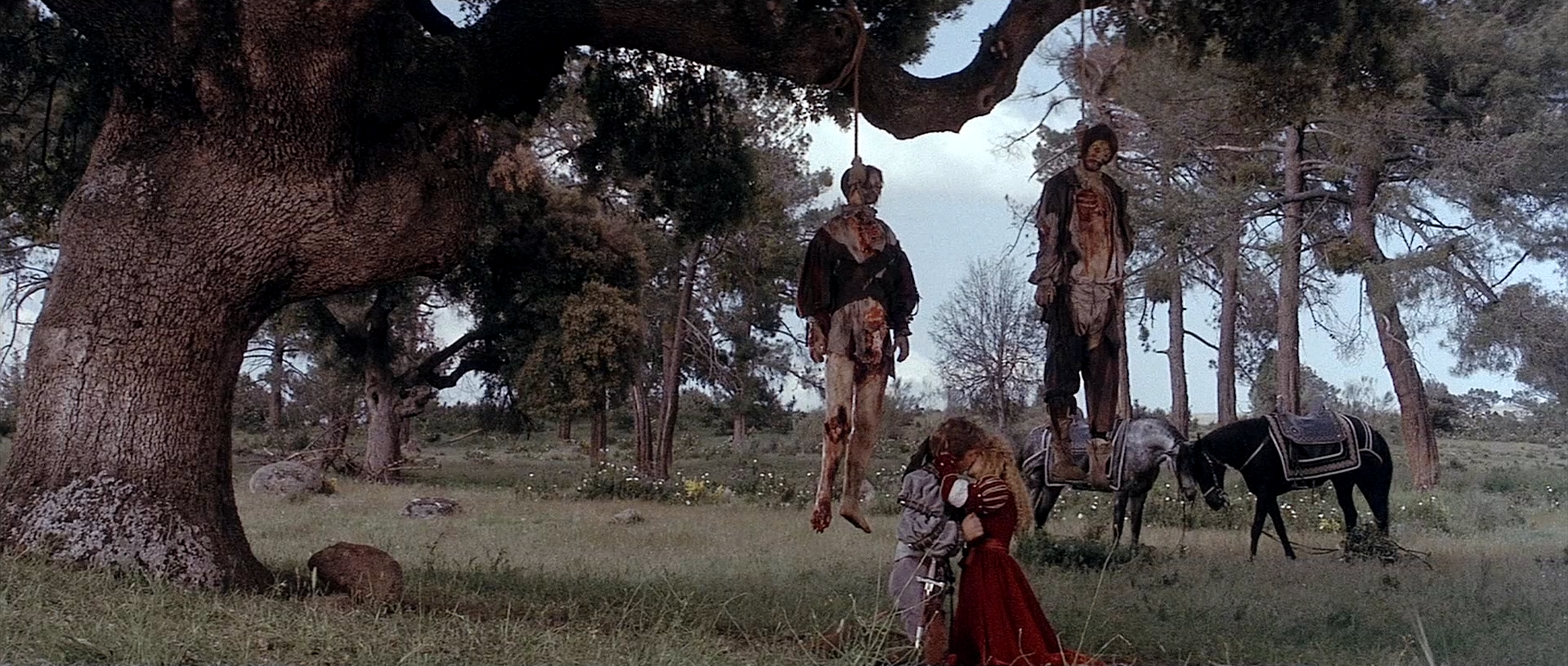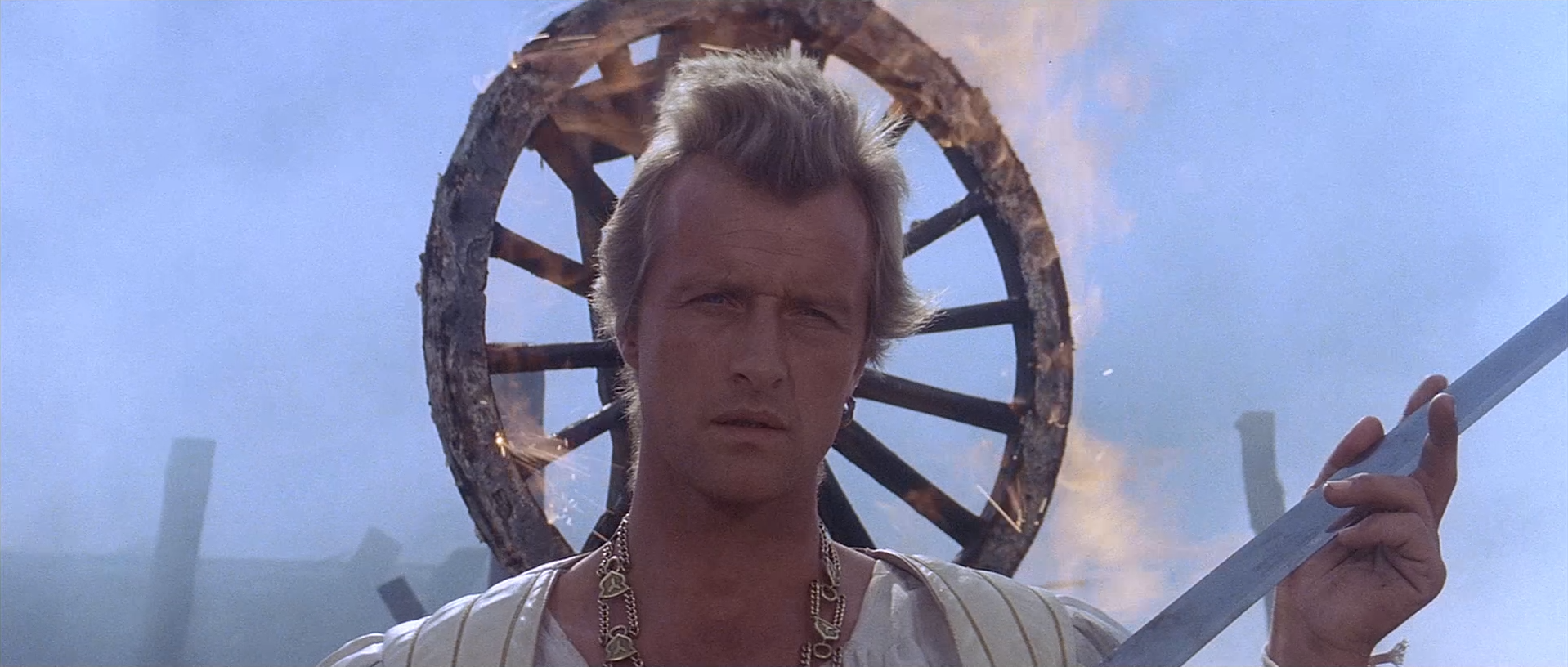On page 224 of the AD&D Dungeon Masters Guide Gary Gygax gave us a list of reading that had inspired him whilst creating the worlds greatest game. In this appendix he handed us the keys to the castle, the “kernels from which grows the fruit of exciting campaigns”. He recommended the list to aid us in understanding D&D’s fiction, and a gift of many hours of good reading. From this list we can derive monsters, locations, NPCs, magic items and the other ephemera that helps breathe life into a campaign.
In these blog posts I aim to share some of the great stories, legends, and cinema that have directly inspired my table top RPGs, as well as giving me plentiful hours of enjoyment. These are not reviews, they are recommendations, and in these posts I will try to identify the “kernels” of good gaming material I’ve discovered within them. So come delve into my library and, like the adventurer, return from the underworld with your fists full of treasure.
This is my Appendix Dread.
FLESH + BLOOD, by Paul Verhoeven (1985)
If you’re a fan of Paul Verhoeven movies then you likely have an appreciation for his strange brand of nihilistic brutality, his often comedic depictions of extreme violence, and his poignant ironies. In Flesh and Blood he gives us his dark vision of medieval Europe, not one of valiant knights rescuing damsels in distress, but one of brutal violence, violation, hardship, superstition, and obsession.
Flesh and Blood takes place in 1501 in an intentionally vague “Western Europe.” The film begins by following Martin (Rutger ‘tears-in-the-rain’ Hauer), the sergeant of a small band of mercenaries. The mercenaries are fighting a siege to help a Lord reclaim his city.

When we first meet his rag-tag group they are taking communion from their division priest, a slightly mad flagellant who goes by the nickname Cardinal (Ronald Lacey).
Once they claim the city walls the mercenaries begin to pillage, but the Cardinal witnesses the first in a series of omens; above them is a burning piece of rope in the shape of a noose. The omen is proven apt as the mercenaries are soon betrayed by their own captain and the Lord who employed them. They are disarmed, and marched out of the city, left empty handed without plunder or pay.
Things take a turn for the worse as Martin’s pregnant lover loses her child whilst they are holed up within a ruin. Whilst digging the baby’s grave, the Cardinal finds a buried statue of Saint Martin, ‘The only saint to hold a sword,’ who’s known to have cut his cloak to share it with a beggar. Sharing the name of the Saint is interpreted as yet another omen, casting their leader in the mould of a divine Robin Hood. Martin, in his hubris, is far too eager to take on this role and play the holy avenger. They set out with Martin manipulating the statue as a divinatory device, ‘wherever his sword points, we shall go.’ And so their life of banditry begins.

What they do next leads to the meat of the story. They travel disguised as pilgrims carrying their saintly relic and hold up the Lords caravan, inadvertently capturing princess Agnes (Jennifer Jason Leigh) in the process.
Agnes, as it turns out, is the films true protagonist, a tainted Helen of Troy type figure who longs to be desired and enjoys the drama of manipulating others around her. When Agnes is introduced on screen she is forcing her maid to have sex with a common soldier. Being a virgin raised in a convent, Agnes just wants to learn what’s involved. When Agnes tires of this display, she whips both of them with a rose branch. Later when she meets her betrothed Prince Steven (Tom Burlinson) for the first time she digs below a pair of hung criminals, looking for a mandrake root. If a couple should eat the root together they will fall in love forever, she quotes from a half-remembered book of dark lore. She indeed finds one, or perhaps just a common turnip, and she and the Prince eat it and embrace below the feet of the two corpses.

Once Agnes is captured by the bandits, Martin rapes her, but she manages use her ‘angelic charms’ to make him fall madly in love with her. She soon begins to feed his delusions of grandeur. Whether this is Stockholm syndrome or some survival instinct is not made overtly clear, but it makes Agnes a compelling character to follow.
The bandits eventually raid a castle and capture it, under direction from the Saints sword of course, fulfilling Martins desire to be more than a common man and become a faux-lord himself. Something to suit the new trophy princess he has on his arm. Finally, Prince Steven the man of knowledge and reason soon comes to reclaim his bride and assaults the bandit’s castle of debauchery. The whole battle between the bandit beast and the royal scholar maths thematically with Agnes’ confused choosing between head and heart. She is told multiple times throughout the film to ‘choose.’

The themes of the film explore Agnes as a kind of femme fatale. She plays both Steven and Martin off against each other in their battle for her, but it is the control she exudes over these men that she truly loves, for when it comes to betray one over the other, she always falters, preferring a state of flux. As stated by Martin in a late scene of the film, she permeates his body. Like the sacrament she becomes one with his flesh and blood. This is a dangerous game of course, and the paired images of sex and death blaze constantly throughout the film.
At times it is a confused film, and one that will undoubtedly provoke distaste in some viewers, but the final result is a harrowing medieval dark thriller, both tragic and enthralling. It receives my highest recommendation.
Now on to this films inspirational uses in Fantasy Adventure Gaming.
The Quintessential Bandit
The band of bandits under Martin could be ripped from this film and plopped directly into a D&D campaign with great success. They have a mad cleric who see’s strange omens. They have strong soldiers with experience in fifteen wars. They have cunning women who don’t mind stabbing and sneaking around to help the cause; potential thief class characters perhaps. They have a delusional and charismatic leader, a great warrior who craves to be more than he was born to be, with a moral compass far on the side of chaotic evil, and an appetite for self destruction.
The motivations of revenge are also very palatable for a group of D&D antagonists. Their holding of a castle with such few numbers could make for an interesting adventure location in itself, and one that a group of low level adventurers could assault over a series of games.
Whilst the band of debauched bandits in this film is fairly small, one could imagine them making a memorable enemy who hold a princess hostage. If you have read DF23 the Haunted Keep you may just find the perfect example of bandits to develop with inspiration from this film.
Superstition
Undoubtedly it is the addition of the omens and the Saintly statue that make the bandits in this film very memorable and offer up plenty of inspiration for our games. One could imagine that an animated statue or clever use of magic mouth could be used to direct a bunch of low intelligence followers just as Martin leads his soldiers. Adding a little bit of magic puts these bandits directly into Sword & Sorcery territory.
The film also has several examples of magical thinking that we can use for depicting peasants in our games. As I mentioned previously, Martin’s bandits take to wearing all red, and this becomes something of a symbol for their united strength and victory. Later, when Martin has captured his own castle, he and the princess take to wearing white. This marks the end of his good luck and the beginning of his downfall, which is posted out several times by his followers.
The use of omens in the film was quite reminiscent of Macbeth for me, another tale of manipulative woman. Perhaps the Bard inspired Mr. Verhoeven directly.
The Charm
The very intense obsession both Prince Steven and Martin have with Agnes is a good mould for the depiction of charm spells in games of D&D. The deathly obsession in both men could easily be used whilst depicting an NPC that has fallen under the spell of a vampire, or magic-user.
Here is one quote from the character of Martin, after he and Agnes lay naked in a stolen bed: You’re in my blood, I’ve never cared about anyone except you.
Or, more aptly put by Agnes herself after Martin pleads for her to choose either him or Steven: Winner takes all.
In conclusion Flesh+Blood offers up many interesting inspirational ideas we can pull from to enrich our Fantasy Adventure Games. If you haven’t watched the film before, I hope I have inspired you to find a copy and enjoy it. Look out for more Appendix Dread posts in the near future.
Appendix Dread Inspiration Rating 💀💀💀💀
